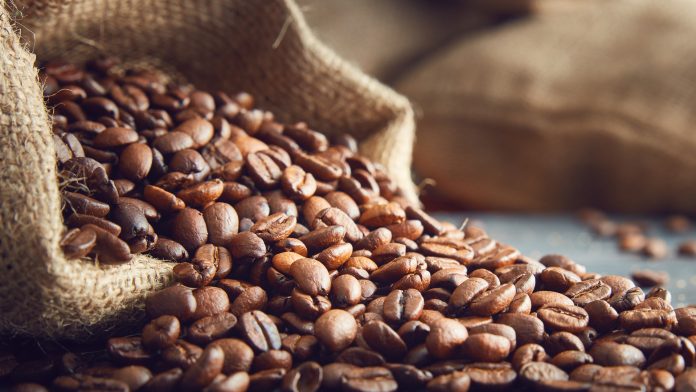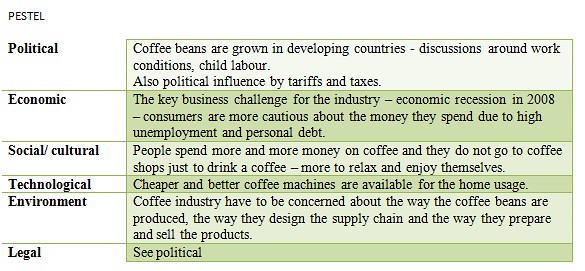Coffee is one of the most liked beverages across the globe. The frequency of usage is dependent on weather and taste. The global coffee sales have been going up with an average of 500 cups consumption which amounts to 100 million USD annually. The industry’s growth indicates a positive growth rate of 5.5 % (Menke, 2018). Different factors affect competitive intensity in the coffee industry and can be broken down using porter’s five forces.
Competitive Rivalry
Despite having a growth rate of more than 5 percent, the industry is facing fierce rivalry due to multiple competitors. Starbucks leads in this industry, with companies such as Tim Horton, Panera bread, and Lavazza following closely (Menke, 2018). The revenues of these companies are high, with Starbucks having an annual revenue collection of 22.38 billion USD, Tim Horton (3 billion USD), Panera bread (2.8 billion USD), and Lavazza (2.4 billion USD). These figures show that the industry is competing internationally, with their financial strengths being the major determinant of competition.
Bargaining Power of Buyers
The bargaining power of buyers in the industry is high due to the existence of many providers. Customers often have loyalty to some specific brands, but in this case, the loyalty is weak, and customers tend to switch from brands to brands with low or no switching costs (Geereddy, 2013). The possibility of changing brands at any time increases the buyers’ bargaining powers, and the coffee companies have to keep this in mind during their strategic plans.
Bargaining Power of Suppliers
The bargaining power of suppliers is low due to the availability of multiple suppliers that the companies can choose to work with. Also, most of these large companies produce their coffee beans, which, together with multiple suppliers, makes the companies the dominant factor in the industry.
The threat of New Entrants
The threat to new entrants in the industry is high as the risk factors to market entry are low. There is no capital intensity, and one can start small. Also, high technical skills are not required, and the required skills are easily trainable (Research and Markets, 2020). The rapid growth of the industry is also attracting new entrants, raising the threat for new entrants.
Threat of Substitutes
The availability of multiple substitutes makes the threat of substitutes to be high. Local hot beverages and tea, which people highly prefer, are becoming major substitutes for coffee.
Better Market Positioning
The rivalry and jockeying for better market positioning can be termed as fierce as the increase in brands poses a threat for the companies that do not position themselves properly. Better market positioning would include being keen on value addition to catering to all consumers, including those with health issues. It would also include understanding the competition and being strategic to be a top player in the industry.
Increased Sales
The rivalry and jockeying for increased sales is a moderate factor in the coffee industry as coffee companies with increased financial strength enjoy a competitive advantage. This increases competition for companies that do not focus on increasing their sales (McAdoo, 2020). However, increased sales is not a major factor in the companies’ competitiveness in the industry.
Market Share
The rivalry and jockeying for market share is a relatively weak factor in the coffee industry as the industry’s growth rate is high, with the global coffee market being valued at 102.02 billion USD as of 2020. It is projected that there will be a further 4.28 percent in 2021-2026 (Industry analysis report, 2021). Therefore, the high growth rate provides equal chances for any company to thrive in the industry.








